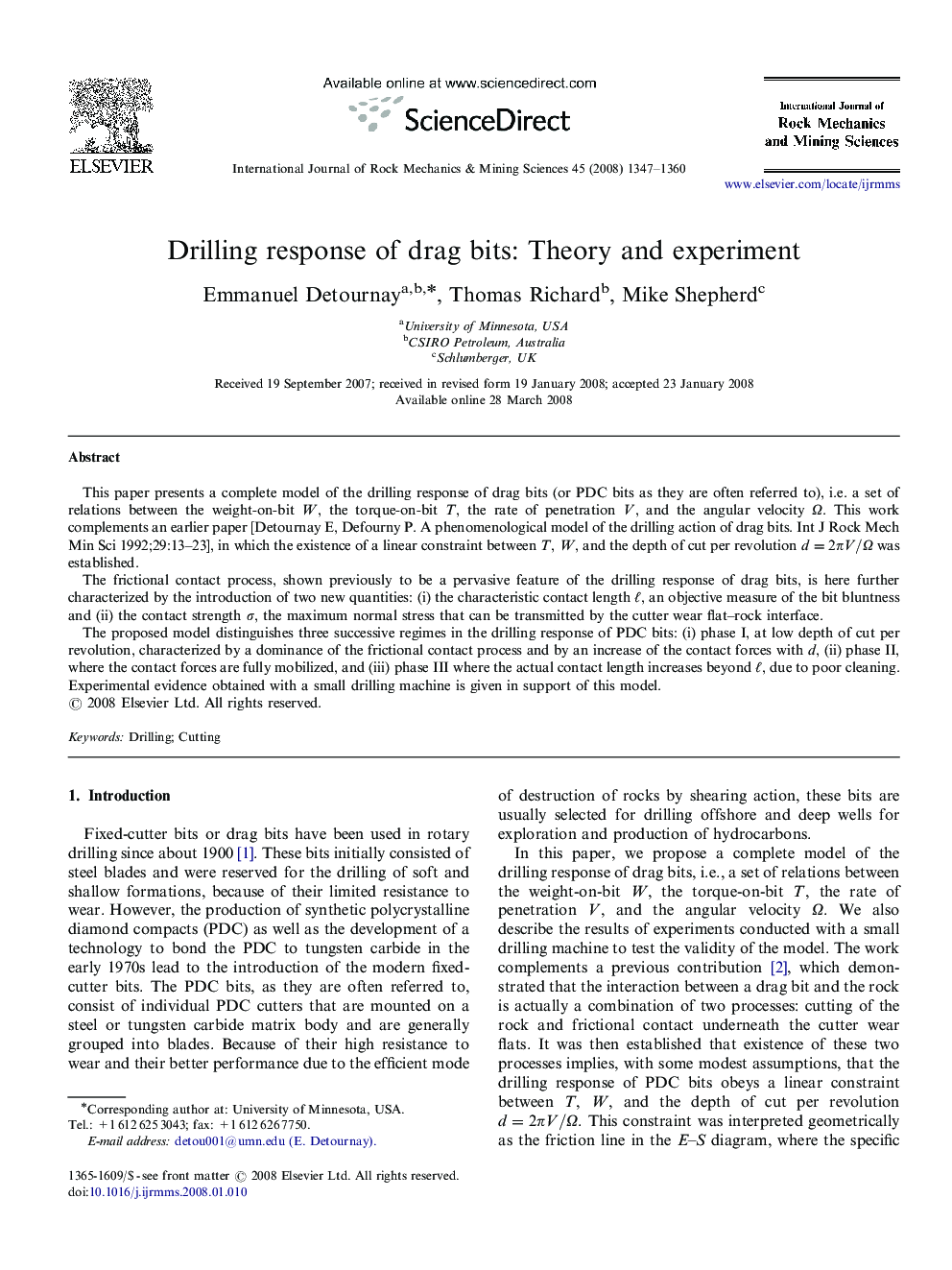| Article ID | Journal | Published Year | Pages | File Type |
|---|---|---|---|---|
| 810119 | International Journal of Rock Mechanics and Mining Sciences | 2008 | 14 Pages |
This paper presents a complete model of the drilling response of drag bits (or PDC bits as they are often referred to), i.e. a set of relations between the weight-on-bit WW, the torque-on-bit TT, the rate of penetration VV, and the angular velocity ΩΩ. This work complements an earlier paper [Detournay E, Defourny P. A phenomenological model of the drilling action of drag bits. Int J Rock Mech Min Sci 1992;29:13–23], in which the existence of a linear constraint between TT, WW, and the depth of cut per revolution d=2πV/Ωd=2πV/Ω was established.The frictional contact process, shown previously to be a pervasive feature of the drilling response of drag bits, is here further characterized by the introduction of two new quantities: (i) the characteristic contact length ℓℓ, an objective measure of the bit bluntness and (ii) the contact strength σσ, the maximum normal stress that can be transmitted by the cutter wear flat–rock interface.The proposed model distinguishes three successive regimes in the drilling response of PDC bits: (i) phase I, at low depth of cut per revolution, characterized by a dominance of the frictional contact process and by an increase of the contact forces with dd, (ii) phase II, where the contact forces are fully mobilized, and (iii) phase III where the actual contact length increases beyond ℓℓ, due to poor cleaning. Experimental evidence obtained with a small drilling machine is given in support of this model.
